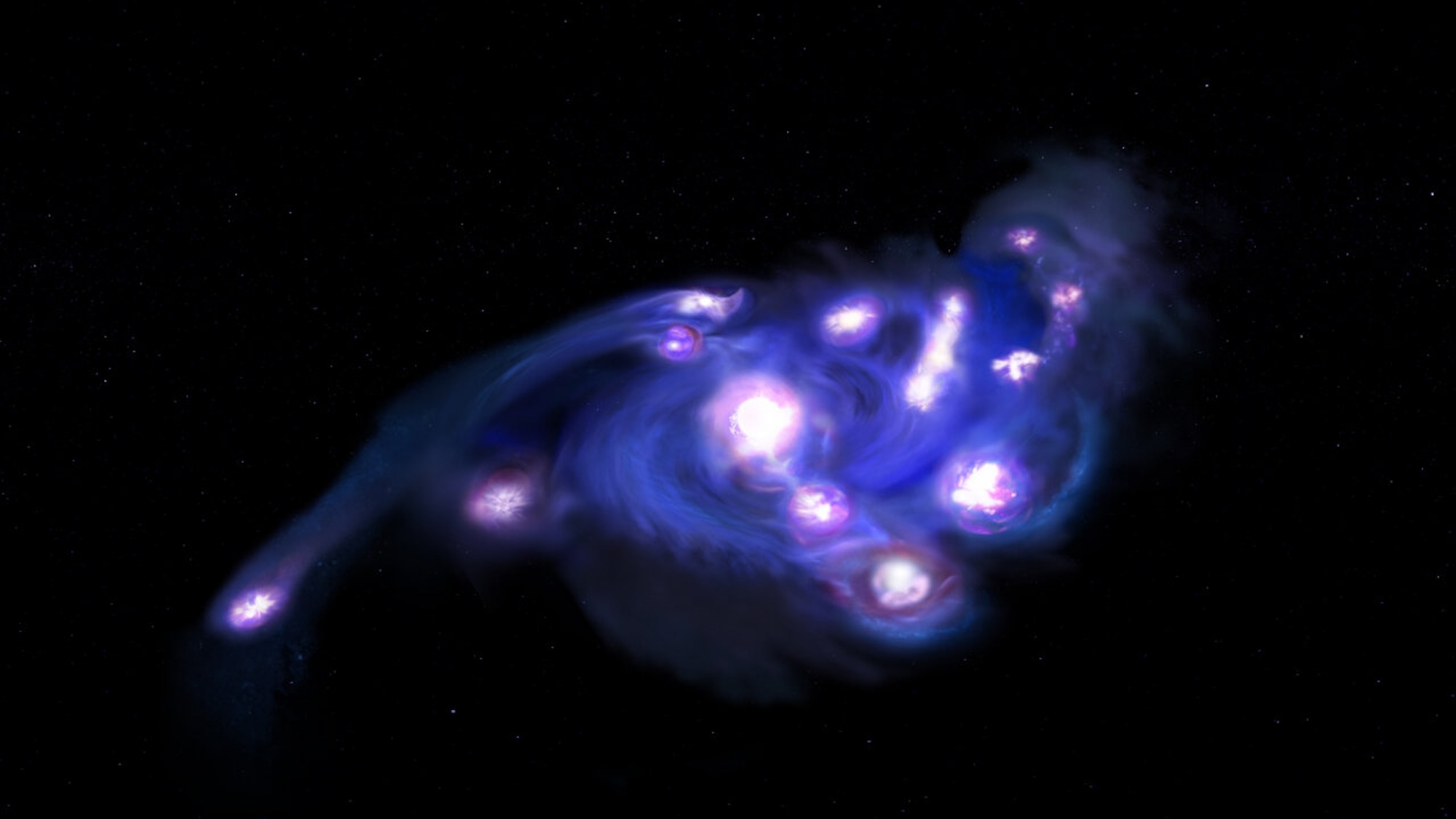Now Reading: Early Universe Revealed: Galaxies Shaped Like Cosmic Clusters
-
01
Early Universe Revealed: Galaxies Shaped Like Cosmic Clusters
Early Universe Revealed: Galaxies Shaped Like Cosmic Clusters

Quick Summary
- Astronomers have observed a unique galaxy formation known as “Cosmic grapes,” located 900 million years after the Big Bang.
- The galaxy contains 15 massive “star-forming clumps” within a single rotating disk, challenging prior theoretical models of early galactic evolution.
- Observations were made using advanced tools such as the James Webb space Telescope (JWST) and the Atacam Large Millimeter/submillimeter Array (ALMA).
- Gravitational lensing by a foreground galaxy cluster amplified Cosmic Grapes’ details, allowing over 100 hours of high-quality observation time.
- JWST and ALMA imagery revealed that this seemingly smooth galaxy, previously observed by Hubble, is composed of compact stellar clumps embedded in a rotating gas disk.
- Astronomers achieved unprecedented spatial resolution down to 10 parsecs (~30 light-years), uncovering new insights into galactic structure and evolution.
- Cosmic Grapes aligns with typical galaxy attributes (mass, star formations, chemical properties), suggesting previous assumptions about smooth galaxies may need reconsideration.
- Researchers suggest revisions to current simulations and theories on feedback processes influencing structure formation in young galaxies.
Indian Opinion Analysis
The groundbreaking observation of Cosmic Grapes redefines how early galaxies are understood. It highlights the importance of advancements in observational technologies like JWST and ALMA in providing clearer insights into cosmic structures. While this discovery is astronomically critically important for understanding our universe’s origins, India could leverage such research collaborations to strengthen its position in global scientific initiatives.
As home to emerging facilities like ISRO’s space programs, India might benefit from further investment into astrophysics infrastructure or strategic alliances with international organizations such as NASA or NRAO. Insights from studies like these could inspire cutting-edge academic research across Indian universities while fostering innovation via private-public partnerships within India’s growing space-tech sector.By bridging gaps between historical data limitations (e.g., Hubble’s interpretations) and newer understandings enabled through gravitational lensing techniques or spatial-resolution improvements-this research also underscores an evolving scientific methodology worth emulating across India’s cosmic studies ambitions.
Read More: Link
























